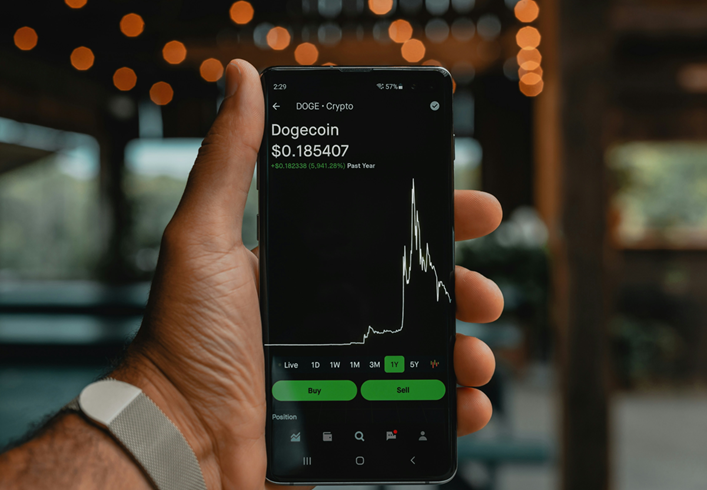Insider trading is a practice where individuals trade securities based on non-public information. It has long been a concern for regulators and market participants. The regulations governing insider trading have evolved over the years to address challenges and ensure the integrity of financial markets.
This comprehensive exploration delves into the historical development and transformation of insider trading regulations in the United States.
The Early Regulatory Framework of Insider Trading Regulations
The origins of insider trading regulations in the United States go back to the Securities Act of 1933 and the Securities Exchange Act of 1934. These landmark pieces of legislation were in response to the 1929 stock market crash. These laws aimed to restore investor confidence by establishing transparency and accountability in the securities markets.
The initial regulations, however, did not explicitly address insider trading as we understand it today. Instead, they focused on the registration and disclosure requirements for securities issuers. The Securities and Exchange Commission (SEC), created by the Securities Exchange Act of 1934, played a pivotal role in overseeing these regulations and gradually expanded its purview to address emerging challenges.
Defining Insider Trading: From Cady, Roberts & Co. to Dirks
The concept of insider trading expanded beyond corporate officers and directors through legal interpretations and court decisions. In the case of Cady, Roberts & Co., the SEC established that the term “insider” was not confined to specific roles but included individuals with a special relationship with the corporation.
This laid the groundwork for the idea of “temporary insiders,” a term coined by the Second Circuit in SEC v. Lund. While not traditional corporate insiders, these individuals were deemed to have a special relationship with the corporation.
The Supreme Court, in a famous footnote in Dirks, endorsed the concept of temporary insiders. It recognized that individuals legitimately given access to inside information for corporate purposes could be considered temporary insiders, assuming a fiduciary duty similar to classic insiders.
This expansion broadened the scope of insider trading regulations and reflected a growing awareness of the need to address trading based on privileged information.
Tippers, Tippees, and the Development of Liability
The evolution of insider trading regulations also encompassed the roles of tippers and tippees. Tipping, the transmission of material non-public information, led to both the tipper and tippee potentially facing liability for insider trading. Section 10(b) and Rule 10b-5 were construed broadly to encompass deceptive conduct “in connection with the purchase or sale of any security,” which included tipping.
The Supreme Court, in Chiarella and later in Dirks, outlined the liability for tippers. A tipper could be liable if they revealed non-public information without a legitimate business justification and the tippee traded on that information. This principle established the foundation for holding tippers jointly and severally liable for the profits or losses resulting from their tippees’ trades.
Tippee Liability: The Personal Benefit Requirement
The test for tippee liability involved a crucial element: the personal benefit requirement. The Supreme Court, in Dirks, held that a tippee could be liable if the tipper received a personal benefit, directly or indirectly, from the disclosure. However, the interpretation of the personal benefit requirement underwent scrutiny and clarification in subsequent cases.
The Second Circuit’s decision in United States v. Newman introduced a more stringent interpretation, requiring evidence of a meaningfully close personal relationship that generated an exchange with objective, consequential, and potentially financial gain.
This clarification aimed to prevent overly broad applications of the personal benefit requirement. However, in United States v. Salman, the Ninth Circuit diverged from Newman, upholding a conviction based on a familial, comity-based personal benefit.
The Supreme Court’s grant of certiorari in Salman highlighted the ongoing debate about the scope of the personal benefit requirement. The nuanced interpretations by different circuits underscore the complexity of determining what constitutes a personal benefit in insider trading.
The Misappropriation Theory: Expanding the Regulatory Landscape
The misappropriation theory emerged as a distinct and expansive approach to insider trading liability. Unlike the classical theory, which required a breach of fiduciary duty by a corporate insider. The misappropriation theory extended liability to those trading on information misappropriated from any source, not necessarily the issuer.
Liability under the misappropriation theory hinges on a duty of trust or confidence between the “misappropriator” and the source of the information. Endorsing this theory, the SEC further expanded it through Rule 10b5-2, providing examples of circumstances constituting a duty of trust or confidence.
The misappropriation theory’s policies align with the overarching goal of securities laws – protecting the marketplace, corporations, and the investing public from individuals who may exploit confidential information for personal gain. Critics, however, argue that the theory is over-inclusive and creates potential loopholes in the regulatory framework.
SEC’s View and Criticisms: Navigating the Controversy
The SEC has consistently supported the misappropriation theory, considering it a linchpin in enforcing insider trading laws. The adoption of Rule 10b5-2 by the SEC in 2000 further solidified its endorsement of the misappropriation theory. This rule provided specific examples of circumstances giving rise to a duty of trust or confidence, contributing to the clarity and consistency of enforcement.
Despite the SEC’s backing, the misappropriation theory has not been without criticism. Some argue that the theory deviates from the plain language of Rule 10b-5, categorizing misappropriation as a breach of contract rather than fraud. Critics also contend that the theory is over-inclusive, potentially leaving gaps in the regulatory framework.
A Dynamic Regulatory Landscape
The evolution of insider trading regulations in the United States reflects an ongoing effort to adapt to changing market dynamics and legal interpretations. From the early regulatory foundations to the nuanced developments in liability and the expansion of the misappropriation theory, the regulatory landscape is dynamic and responsive.
As courts grapple with interpretations and refine liability boundaries, insider trading regulations will likely evolve further. The delicate balance between protecting market integrity and avoiding overly broad applications of liability remains a challenge for regulators, emphasizing the need for a nuanced and adaptable approach in the ever-evolving world of financial markets.
